Peripheral natural killer cells in chronic hepatitis B patients display multiple molecular features of T cell exhaustion
- PMID: 33507150
- PMCID: PMC7870135
- DOI: 10.7554/eLife.60095
Peripheral natural killer cells in chronic hepatitis B patients display multiple molecular features of T cell exhaustion
Abstract
Antiviral effectors such as natural killer (NK) cells have impaired functions in chronic hepatitis B (CHB) patients. The molecular mechanism responsible for this dysfunction remains poorly characterised. We show that decreased cytokine production capacity of peripheral NK cells from CHB patients was associated with reduced expression of NKp30 and CD16, and defective mTOR pathway activity. Transcriptome analysis of patients NK cells revealed an enrichment for transcripts expressed in exhausted T cells suggesting that NK cell dysfunction and T cell exhaustion employ common mechanisms. In particular, the transcription factor TOX and several of its targets were over-expressed in NK cells of CHB patients. This signature was predicted to be dependent on the calcium-associated transcription factor NFAT. Stimulation of the calcium-dependent pathway recapitulated features of NK cells from CHB patients. Thus, deregulated calcium signalling could be a central event in both T cell exhaustion and NK cell dysfunction occurring during chronic infections.
Keywords: calcium pathway; dysfunction; human; immunology; inflammation; mTOR; natural killer.
© 2021, Marotel et al.
Conflict of interest statement
MM, MV, AD, IT, LB, OA, MP, YR, MA, GR, SV, MG, VL, SA, DD, TW, UH, AM No competing interests declared
Figures
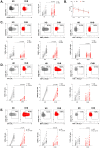





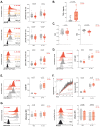
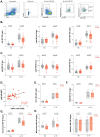
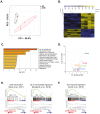
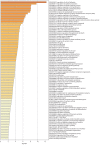


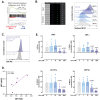




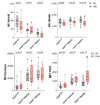

Similar articles
-
Natural killer cells contribute to hepatic injury and help in viral persistence during progression of hepatitis B e-antigen-negative chronic hepatitis B virus infection.Clin Microbiol Infect. 2016 Aug;22(8):733.e9-733.e19. doi: 10.1016/j.cmi.2016.05.009. Epub 2016 May 18. Clin Microbiol Infect. 2016. PMID: 27208430
-
KLRG1+ natural killer cells exert a novel antifibrotic function in chronic hepatitis B.J Hepatol. 2019 Aug;71(2):252-264. doi: 10.1016/j.jhep.2019.03.012. Epub 2019 Mar 21. J Hepatol. 2019. PMID: 30905683
-
Blockade of immunosuppressive cytokines restores NK cell antiviral function in chronic hepatitis B virus infection.PLoS Pathog. 2010 Dec 16;6(12):e1001227. doi: 10.1371/journal.ppat.1001227. PLoS Pathog. 2010. PMID: 21187913 Free PMC article.
-
The Good and the Bad of Natural Killer Cells in Virus Control: Perspective for Anti-HBV Therapy.Int J Mol Sci. 2019 Oct 13;20(20):5080. doi: 10.3390/ijms20205080. Int J Mol Sci. 2019. PMID: 31614928 Free PMC article. Review.
-
Natural Killer Cells and T Cells in Hepatocellular Carcinoma and Viral Hepatitis: Current Status and Perspectives for Future Immunotherapeutic Approaches.Cells. 2021 May 28;10(6):1332. doi: 10.3390/cells10061332. Cells. 2021. PMID: 34071188 Free PMC article. Review.
Cited by
-
Peripheral NK cell phenotypic alteration and dysfunctional state post hepatitis B subviral particles stimulation in CHB patients: evading immune surveillance.Front Immunol. 2024 Sep 12;15:1427519. doi: 10.3389/fimmu.2024.1427519. eCollection 2024. Front Immunol. 2024. PMID: 39328404 Free PMC article.
-
Phenotypic Characterization by Single-Cell Mass Cytometry of Human Intrahepatic and Peripheral NK Cells in Patients with Hepatocellular Carcinoma.Cells. 2021 Jun 14;10(6):1495. doi: 10.3390/cells10061495. Cells. 2021. PMID: 34198593 Free PMC article.
-
Immune checkpoints on T and NK cells in the context of HBV infection: Landscape, pathophysiology and therapeutic exploitation.Front Immunol. 2023 Mar 28;14:1148111. doi: 10.3389/fimmu.2023.1148111. eCollection 2023. Front Immunol. 2023. PMID: 37056774 Free PMC article. Review.
-
Antiviral therapy for hepatitis B virus infection is beneficial for the prognosis hepatocellular carcinoma.World J Gastrointest Oncol. 2025 Jan 15;17(1):93983. doi: 10.4251/wjgo.v17.i1.93983. World J Gastrointest Oncol. 2025. PMID: 39817121 Free PMC article.
-
The novel mechanism facilitating chronic hepatitis B infection: immunometabolism and epigenetic modification reprogramming.Front Immunol. 2024 Jan 15;15:1349867. doi: 10.3389/fimmu.2024.1349867. eCollection 2024. Front Immunol. 2024. PMID: 38288308 Free PMC article. Review.
References
-
- Alfei F, Kanev K, Hofmann M, Wu M, Ghoneim HE, Roelli P, Utzschneider DT, von Hoesslin M, Cullen JG, Fan Y, Eisenberg V, Wohlleber D, Steiger K, Merkler D, Delorenzi M, Knolle PA, Cohen CJ, Thimme R, Youngblood B, Zehn D. TOX reinforces the phenotype and longevity of exhausted T cells in chronic viral infection. Nature. 2019;571:265–269. doi: 10.1038/s41586-019-1326-9. - DOI - PubMed
-
- Aliahmad P, Kaye J. Nuclear factor TOX is required for lymph node organogenesis and NK cell development (138.29) The Journal of Immunology . 2009;182:138.29. - PubMed
-
- Baier-Bitterlich G, Uberall F, Bauer B, Fresser F, Wachter H, Grunicke H, Utermann G, Altman A, Baier G. Protein kinase C-theta isoenzyme selective stimulation of the transcription factor complex AP-1 in T lymphocytes. Molecular and Cellular Biology. 1996;16:1842–1850. doi: 10.1128/MCB.16.4.1842. - DOI - PMC - PubMed
Publication types
MeSH terms
Substances
Associated data
- Actions
LinkOut - more resources
Full Text Sources
Other Literature Sources
Molecular Biology Databases
Miscellaneous

